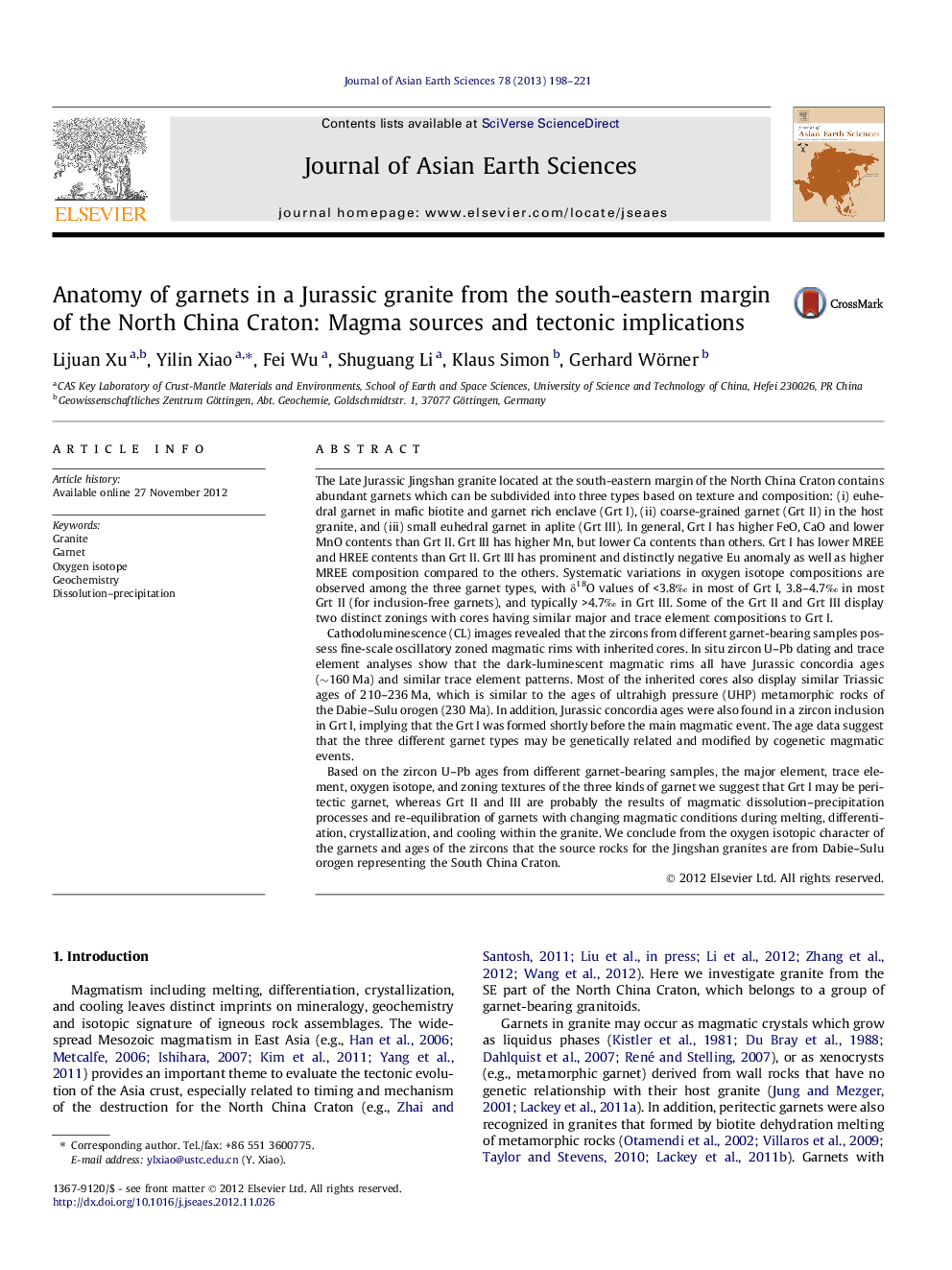| کد مقاله | کد نشریه | سال انتشار | مقاله انگلیسی | نسخه تمام متن |
|---|---|---|---|---|
| 4730843 | 1640389 | 2013 | 24 صفحه PDF | دانلود رایگان |

The Late Jurassic Jingshan granite located at the south-eastern margin of the North China Craton contains abundant garnets which can be subdivided into three types based on texture and composition: (i) euhedral garnet in mafic biotite and garnet rich enclave (Grt I), (ii) coarse-grained garnet (Grt II) in the host granite, and (iii) small euhedral garnet in aplite (Grt III). In general, Grt I has higher FeO, CaO and lower MnO contents than Grt II. Grt III has higher Mn, but lower Ca contents than others. Grt I has lower MREE and HREE contents than Grt II. Grt III has prominent and distinctly negative Eu anomaly as well as higher MREE composition compared to the others. Systematic variations in oxygen isotope compositions are observed among the three garnet types, with δ18O values of <3.8‰ in most of Grt I, 3.8–4.7‰ in most Grt II (for inclusion-free garnets), and typically >4.7‰ in Grt III. Some of the Grt II and Grt III display two distinct zonings with cores having similar major and trace element compositions to Grt I.Cathodoluminescence (CL) images revealed that the zircons from different garnet-bearing samples possess fine-scale oscillatory zoned magmatic rims with inherited cores. In situ zircon U–Pb dating and trace element analyses show that the dark-luminescent magmatic rims all have Jurassic concordia ages (∼160 Ma) and similar trace element patterns. Most of the inherited cores also display similar Triassic ages of 210–236 Ma, which is similar to the ages of ultrahigh pressure (UHP) metamorphic rocks of the Dabie–Sulu orogen (230 Ma). In addition, Jurassic concordia ages were also found in a zircon inclusion in Grt I, implying that the Grt I was formed shortly before the main magmatic event. The age data suggest that the three different garnet types may be genetically related and modified by cogenetic magmatic events.Based on the zircon U–Pb ages from different garnet-bearing samples, the major element, trace element, oxygen isotope, and zoning textures of the three kinds of garnet we suggest that Grt I may be peritectic garnet, whereas Grt II and III are probably the results of magmatic dissolution–precipitation processes and re-equilibration of garnets with changing magmatic conditions during melting, differentiation, crystallization, and cooling within the granite. We conclude from the oxygen isotopic character of the garnets and ages of the zircons that the source rocks for the Jingshan granites are from Dabie–Sulu orogen representing the South China Craton.
• Restite is found in Jingshan granite.
• Garnets in the late Jurassic Jingshan granite are of three types.
• Type I garnets are peritectic, whereas types II and III resulted from dissolution–reprecipitation.
• Jingshan granite derived from melting of Dabie–Sulu metamorphic rocks.
Journal: Journal of Asian Earth Sciences - Volume 78, 15 December 2013, Pages 198–221